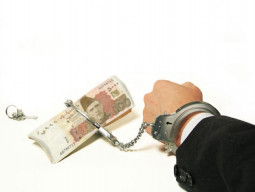
The external debt and liabilities of $91.8 billion as of March-end suggest that the figure may touch $100 billion very soon as the country faces grave challenges in meeting growing external financing requirements. Pakistan is scheduled to make some bullet debt and interest payments in the last quarter (April-June) of the current fiscal year, according to sources in the finance ministry.
Pakistan’s external debt, liabilities touch $89 billion
The $91.8-billion external debt and liabilities were higher by $30.9 billion or 50.6% compared to the level recorded in June 2013 when the Pakistan Muslim League-Nawaz (PML-N) government came to power.
Of the total external debt and liabilities, the government’s public debt obligations including foreign exchange liabilities were $76.1 billion at the end of March.
In the past four years and nine months, the public debt-related obligations increased 42.5% or $22.7 billion, showed the central bank data. In June 2013, the external public debt including foreign exchange liabilities stood at only $53.4 billion.
Pakistan’s external debt to climb to $103b by June 2019: IMF report
A major hike came in the external debt contracted by issuing sovereign bonds and taking expensive commercial loans.
Since June 2013, the PML-N government has acquired a whopping $42.6 billion in external loans, which is taking its toll on the national exchequer due to the mounting debt servicing cost.
Starting from July 2013, with every passing year, the quantum of external debt has kept growing due to the government’s inability to implement policies that could have ensured sufficient non-debt creating inflows.
The International Monetary Fund (IMF)’s first post-programme monitoring report shows Pakistan’s gross external debt in terms of exports was 193.2% in 2013, which is projected to deteriorate to an alarming 316% in June this year.
During this period, Pakistan’s gross external financing requirements have swelled from $17.2 billion to $24 billion.
Moody's says Pakistan's external debt will increase to $79 billion
It was an alarming situation and the government did not have a concrete back-up plan to handle its external account, said sources in the finance ministry. They said the top bureaucracy of the ministry was not very much concerned and it was just a routine matter for them.
There are apprehensions that the country may not survive financially for long without the IMF support. However, they said the finance ministry has not yet prepared a plan that it may share with the IMF in case it needs emergency support.
There are unconfirmed reports that top bureaucracy of the finance ministry may be reshuffled very soon.
The IMF report noted that the bound and stress tests suggest that the external debt-to-GDP ratio would be affected by adverse shocks. “While sensitive mostly to current account and exchange rate shocks, the external debt ratio would exceed 45% only under the real depreciation shock scenario,” it added.
Pakistan’s gross official foreign currency reserves as of May 4 stood at only $11.16 billion. The government took no time in eating up the entire $1 billion Chinese loan received on the second last day of the previous month.
The gross official foreign currency reserves of $11.16 billion include loans of $6.13 billion the central bank has acquired from domestic banks to shore up its reserves. By excluding these short-term borrowings, the reserves are almost at the level recorded in June 2013.
Owing to the huge domestic and foreign borrowings, debt servicing is now the single largest expenditure in the federal budget, estimated at Rs1.62 trillion or 30.7% for the next fiscal year 2018-19. A sum of $5 billion was spent on servicing the outstanding stock of external debt in just nine months of the ongoing fiscal year, according to the central bank. The country paid $3.52 billion in principal loans and $1.44 billion in interest on outstanding loans.
In its Debt Policy Statement 2017-18, which the finance ministry presented to the lower house of parliament early this year, the government admitted that during the last fiscal year the country’s external debt increased at a faster pace than its foreign exchange earnings.
Pakistan’s external debt as a percentage of foreign exchange reserves increased to a three-year high. Similarly, the cost of external debt servicing as a percentage of foreign exchange earnings increased significantly.
Published in The Express Tribune, May 17th, 2018.
Like Business on Facebook, follow @TribuneBiz on Twitter to stay informed and join in the conversation.


















COMMENTS
Comments are moderated and generally will be posted if they are on-topic and not abusive.
For more information, please see our Comments FAQ